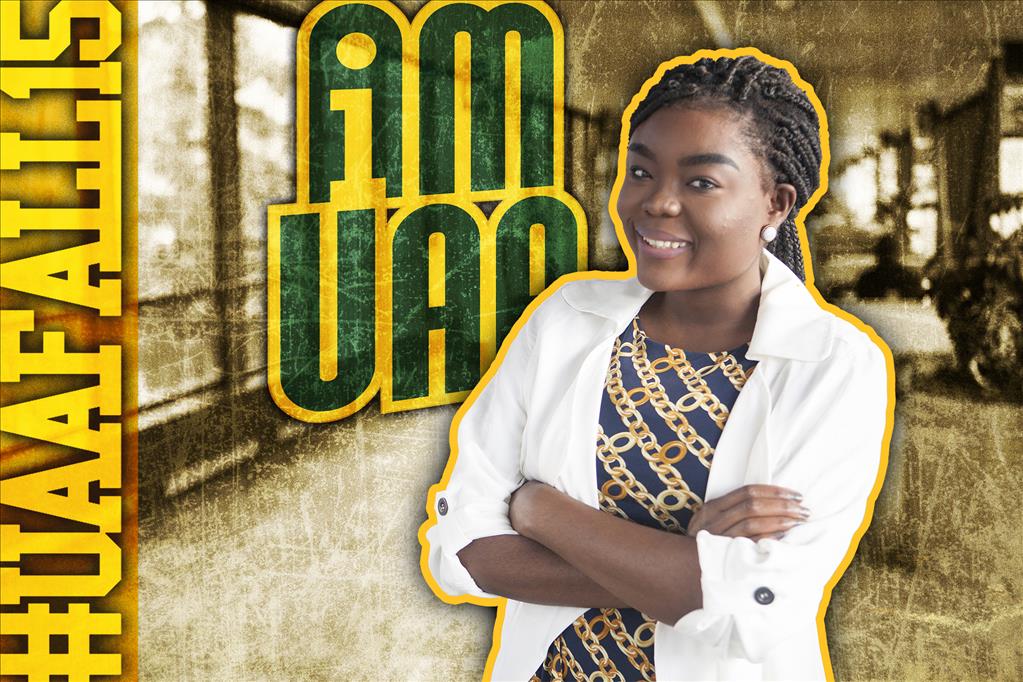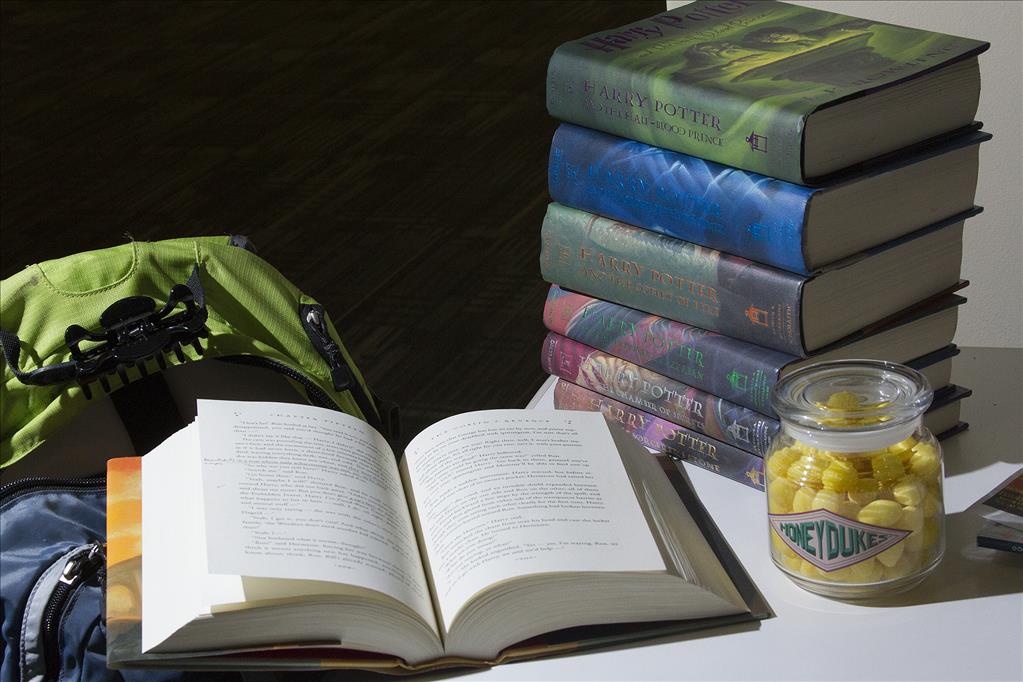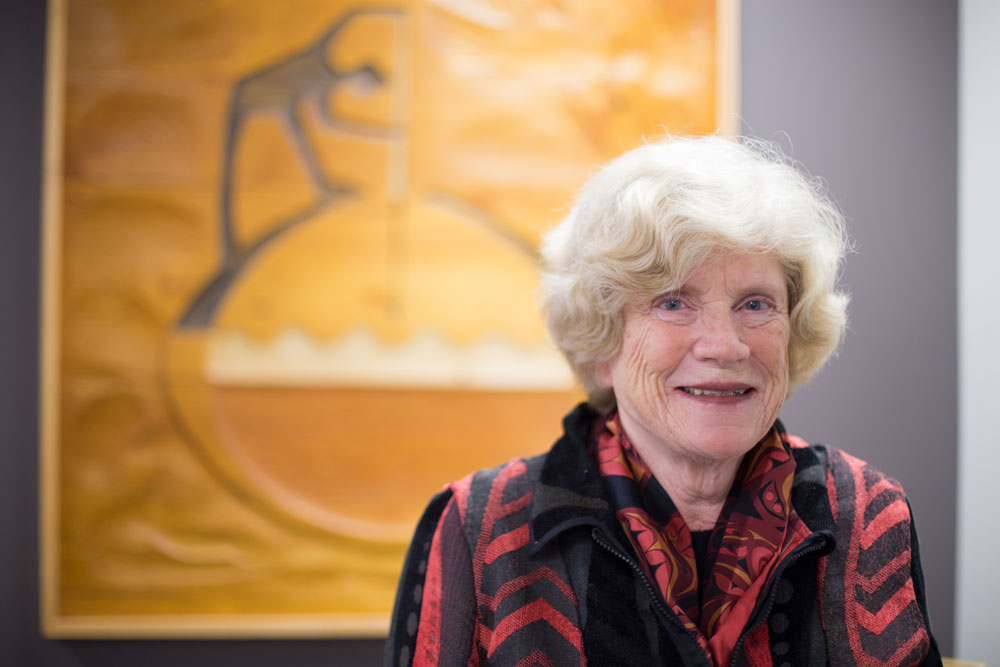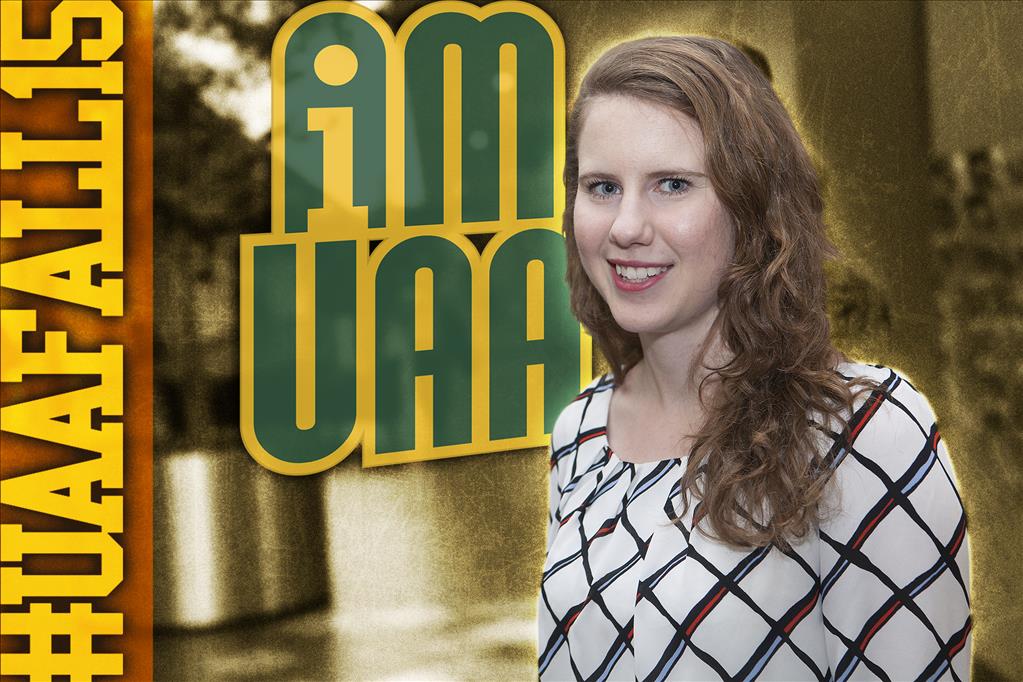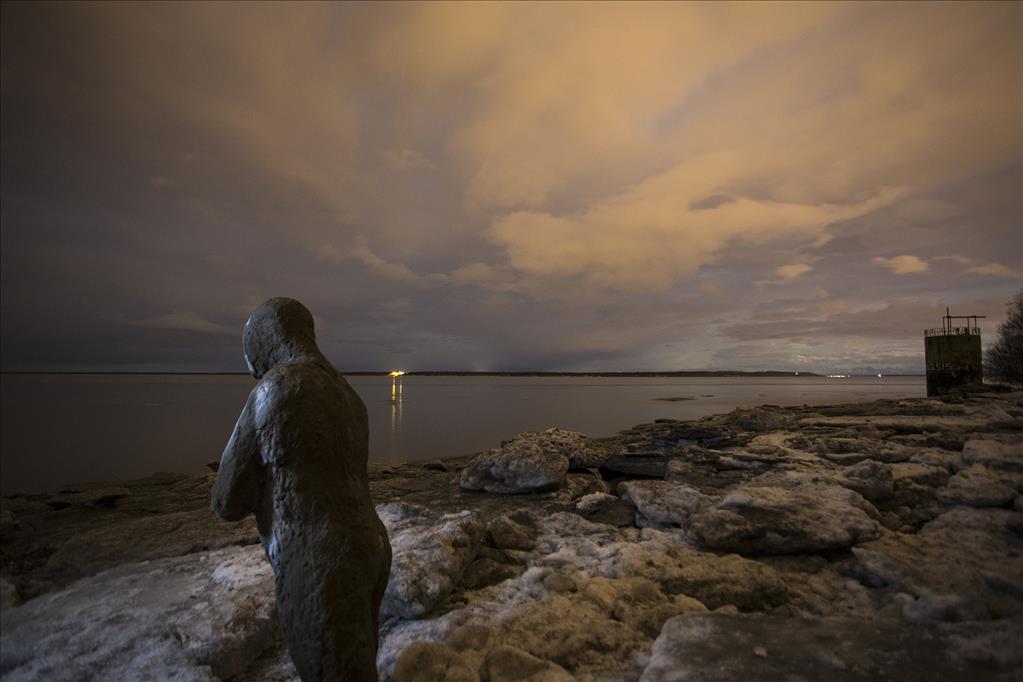Hungary-born anthropologist strives to preserve Sugpiaq culture
by Tracy Kalytiak |
Medeia Csoba DeHass was 16, watching TV at home in Miskolc, Hungary, when a show aired that ignited a new passion and shifted the trajectory of her life.

Medeia Csoba DeHass, a UAA anthropologist, has studied the fusion of Russian Orthodox religion with Alaska Native cultures, lived in Nanwalek and now works to preserve Sugpiaq culture and language. (Photo by Philip Hall/University of Alaska Anchorage)
Csoba DeHass couldn't understand the words of that German TV program, but its images gripped her attention. Familiar Eastern Christian domes and spires rose blue and white amid the raw, strange splendor of Alaska, a land thousands of miles distant from her living room in a communist country where people weren't allowed to openly practice their faith.
"In my consciousness of the restrictions I grew up with, I was looking at this movie in Alaska where people are Russian Orthodox so openly and it's celebrated, and their community is completely embracing this," said Csoba DeHass, now an assistant professor of anthropology and Alaska Native studies at UAA. "It's everywhere, wherever you go in the community. In Hungary, my grandfather was a priest-Greek Catholic priests could marry-but I was taught as a child not to publicize that in my school because you can be punished for it. What a huge difference between the two. I think that was captivating for me."
Csoba DeHass says that's why she's interested in studying religion from an anthropological perspective.
"How do people deal with religion; what is it for, really; how does it play into our life, because you can't just separate out religion," she said. "You can't say it doesn't affect your life because it does, on all levels."
The dividing line
1989 brought what Csoba DeHass calls "the changes," events leading to the erosion and collapse of the Soviet Union's dominance in Hungary and other Eastern European countries. Hungary reveled in freedom, celebrating a resurgence of Hungarian language, dance, food and art, and a revival of religion.
Books about religion became available again, so Csoba DeHass finally had the opportunity to scour libraries in town for books about the religion she had grown up in and the faraway land where a branch of that religion flourished. Later, she spent afternoons at the library of the Hungarian Ethnographic Museum, reading up on Arctic cultures and peoples and Russian Orthodoxy in Alaska.
"If you look at the globe and see where Hungary is, it's pretty much the dividing line between Eastern Christianity and Western Christianity," she said. "If you imagine the other side of the globe, Alaska is pretty much how far Eastern Christianity got in Russian America."
In that German movie she saw in 1989, Csoba DeHass remembered seeing a woman talking to someone as they walked in a green field. That woman, she learned, was Russian America scholar Lydia Black, an anthropologist and University of Alaska Fairbanks professor emerita who lived in Kodiak.
"My mom was visiting with a family friend who was a priest and he mentioned that an elderly Byzantine Catholic priest from New Jersey was visiting his family in one of the villages around Hungary, so we all drove over and I talked with him," Csoba DeHass said. "When he returned to the U.S., he sent me a copy of Father Michael Oleksa's Orthodox Alaska and, armed with a dictionary, I pretty much devoured it in one sitting."
The priest also sent Csoba DeHass a phone number for Lydia Black.
"I called Lydia and woke her up at 2 a.m.," she said. "But Lydia just listened to me patiently and when I was done talking, she gave me some information and the phone number of the seminary. Then she paused and asked, 'Do you know what time it is here? Make sure you don't call the seminary at this time!' She was very sweet about it."
'You need to go to a village'
Csoba DeHass enrolled at Budapest's Eötvös Loránd University and began working on a Master of Arts degree in history.
"I do not have any [Bachelor of Arts degrees]," she said. "The first degree you could enroll in at a Hungarian university at the time was a [Master of Arts degree]. This was basically five years of study focusing on your specialization. So the first two years students at the U.S. spend on completing their general education requirements, Hungarian students already covered in high school. This changed in the past few years with European Union accreditation."
Csoba DeHass first came to the United States in 2000 to perform fieldwork for a second Hungarian master's degree she pursued, in cultural anthropology.
As she worked on her two master's degrees, Csoba DeHass tried to figure out how she could come to Alaska and begin learning more about the interweaving of Russian Orthodox and Alaska Native cultures. She traveled to Valdez in 2000, enrolled in community college since she didn't have to pay out-of-state tuition and then worked with local people who were Russian Orthodox, most hailing from the Alaska Native communities of Nanwalek, Port Graham, Chenega and Tatitlek since there's not a Russian Orthodox church in Valdez.
"I learned from them," she said. "They kept telling me if you really want to know about Russian Orthodoxy in Alaska, you need to go to and live in a village."
Quenching a thirst for knowledge
While in Valdez, a fellow student working the desk at the community college admonished her for trying to bring an open soda into the computer lab. Despite their rocky start, Csoba DeHass and that man from Iowa, David DeHass, struck up a romance. They ended up marrying in Hungary after she went back in 2001 to finish up her degrees and graduate.
"I needed to be there to do the final exams and write-up and all that," she said.
Csoba DeHass wanted to get back to Alaska and decided to visit Lydia Black in Kodiak.
"From Valdez, I took the ferry there in December," she said. "It was terrible, iced over, couldn't go outside on the boat. Lydia was just a wonderful person. I got to spend four days there with her during that trip-from early morning to late night. She was my 'celebrity,' the person who knew answers to my many, many questions and I wanted to learn from her as much as I could."
Black lined up a huge stack of books in the archives the first day and told Csoba DeHass to go through those while [Black] sorted archival material.
"She'd stop by periodically to see how I was doing and to answer questions," Csoba DeHass said. "She would cook Hungarian food for me and we would walk to the store while she was explaining the history of Kodiak as we passed landmarks. We would argue about history and historical interpretation...Lydia would give me 'homework' each night to watch a movie or a book to read, so I spent only a few hours sleeping each night."
During one supper, the two women were talking about work that had been done in Alaska.
"[Black] said nobody has really done ethnographic work in Nanwalek," she said.
Csoba DeHass wanted to follow the advice she'd received, to pursue a Ph.D. in anthropology at the University of Alaska Fairbanks, live in an Alaska Native village and conduct research into why villagers remain Russian Orthodox today even though Russian America is 145 years gone.
She decided to ask permission to live in Nanwalek as she conducted research for her dissertation.
"Our friend set up a meeting for me and my husband," she said. "We met with the Nanwalek Indian Reorganization Act Council and presented, saying this is what we'd like to do, study Russian Orthodoxy. They talked about it and agreed my husband and I could come in-at the time, he was working on his master's in cross-cultural studies."
They could stay a year, council members said, if the DeHasses moved into a house that needed work and fixed it up. "We ended up staying 15 months," she said. "Then we kept going back to visit. When Dave was doing his dissertation research, we lived there for eight months, then for my postdoc for five months. Last summer we were there for a month."
Fusing Russian religion with Alaska Native culture
Why Nanwalek? The off-the-road-system community on the southernmost chunk of the Kenai Peninsula was the first Russian trading post on the Alaska mainland. It's now home to some 300 people of Russian and Sugpiaq ancestry, whose first language is Sugt'stun.
"This is just one church in the community and they actively resist any kind of other church to come in," she said. "Anyone who is from Nanwalek, at least one parent, even if living Outside, if they have a baby, that baby will be Russian Orthodox. There's no difference at this point between becoming a member of the church and becoming a member of the community because the two things completely overlap."
The Russian Orthodox religion took root and flourished, Csoba DeHass said, partly because after the initial colonial period of fur traders, both the Russian priests and the Russian American Company employees realized that it would be counterproductive for them to make Alaska Native peoples change their daily lifestyle.
"It wouldn't have made sense for them because they needed local people to go out and hunt," she said.
The cultures cross-pollinated. Alaska Native people embraced the Russian Orthodox religion and Russians wore Russian-style clothing crafted from gut and hand-sewn with local furs.
"People don't just take something wholesale," she said. "They look at it within their own reality-'Does it make sense to us?'"
Preserving heritage, enriching communities
Csoba DeHass received her Ph.D. from UAF and went to Dartmouth College to work as a National Science Foundation postdoctoral fellow at its Native American Studies Program and the Institute of Arctic Studies. "I wanted to work with Sergei Kan, who was just as much an influence on my scholarly development as Lydia. His dedicated long-term ethnohistorical work in Tlingit Russian Orthodoxy inspired my own work in Nanwalek, and I feel very fortunate that I had the opportunity to learn from Sergei's mentorship while at Dartmouth."
Csoba DeHass now teaches anthropology and Alaska Native studies at UAA. She worked at the Pratt Museum in Homer to help make its collections and oral histories more readily accessible for Alaska Native villagers and researchers, enriching community life by educating people and preserving their heritage. The Lower Kenai Peninsula Material Culture and Heritage Preservation Project will be shared with Nanwalek and its neighboring community, Port Graham.
Most recently, Csoba DeHass and her colleague, Kirk Scott, as well as their undergraduate student assistants, collaborating with the Nanwalek IRA Council, received word that UAA's Faculty Development grant will fund their effort to create Alaska Native flashcards in the Sugt'stun language via an Android app for the preservation of endangered languages.
"No words can really thank anyone for such thoughtful, caring and sometimes blunt mentoring one receives throughout the years," she said. "We often tend to forget that each and every faculty member whose photograph is posted on a departmental webpage has many mentors standing invisibly behind them. The way I look at it, the best way to repay their efforts and time is to do the same for our students. This is what I would like to be for my students."
Written by Tracy Kalytiak, UAA Office of University Advancement
 "Hungary-born anthropologist strives to preserve Sugpiaq culture" is licensed under a Creative Commons Attribution-NonCommercial 4.0 International License.
"Hungary-born anthropologist strives to preserve Sugpiaq culture" is licensed under a Creative Commons Attribution-NonCommercial 4.0 International License.










